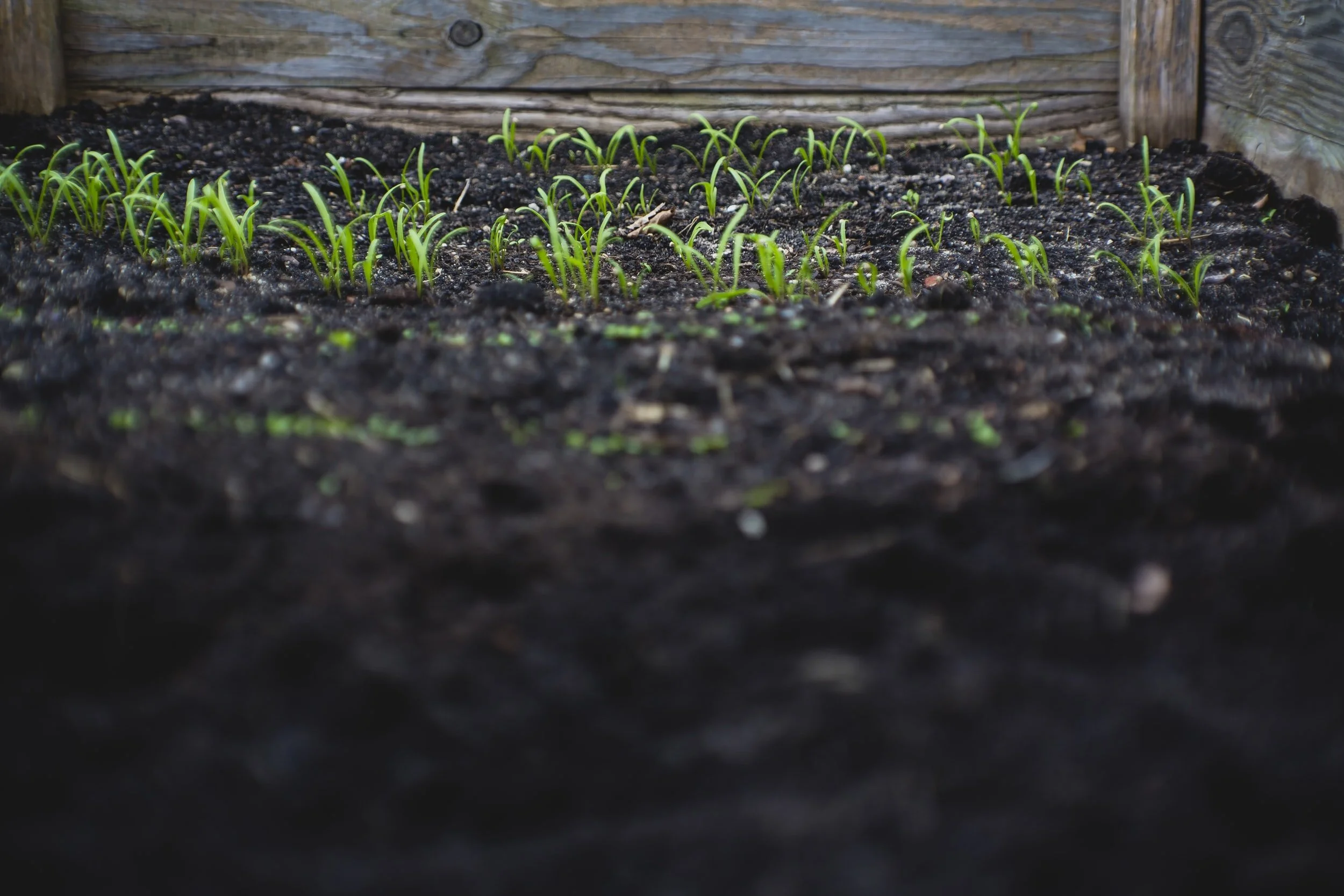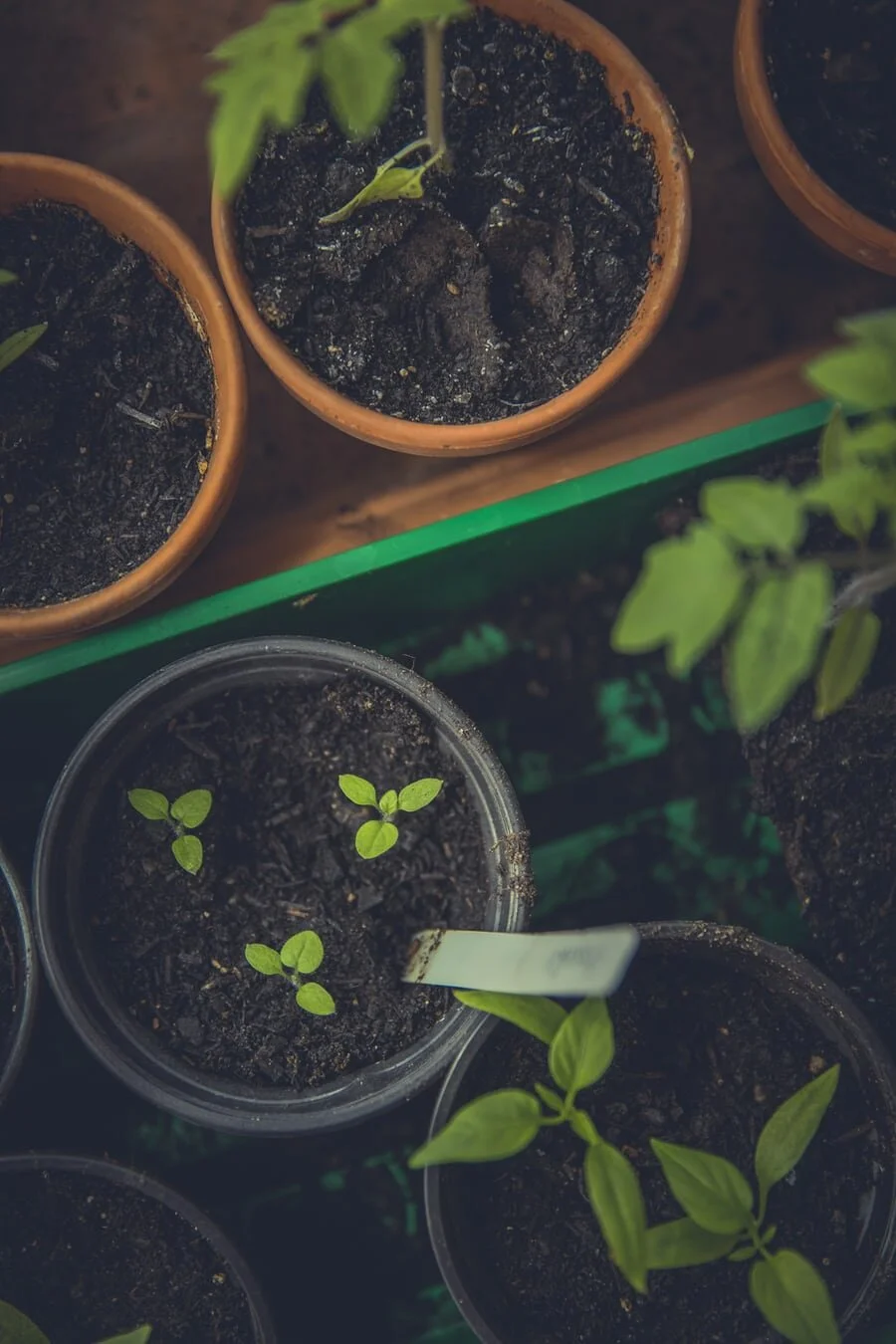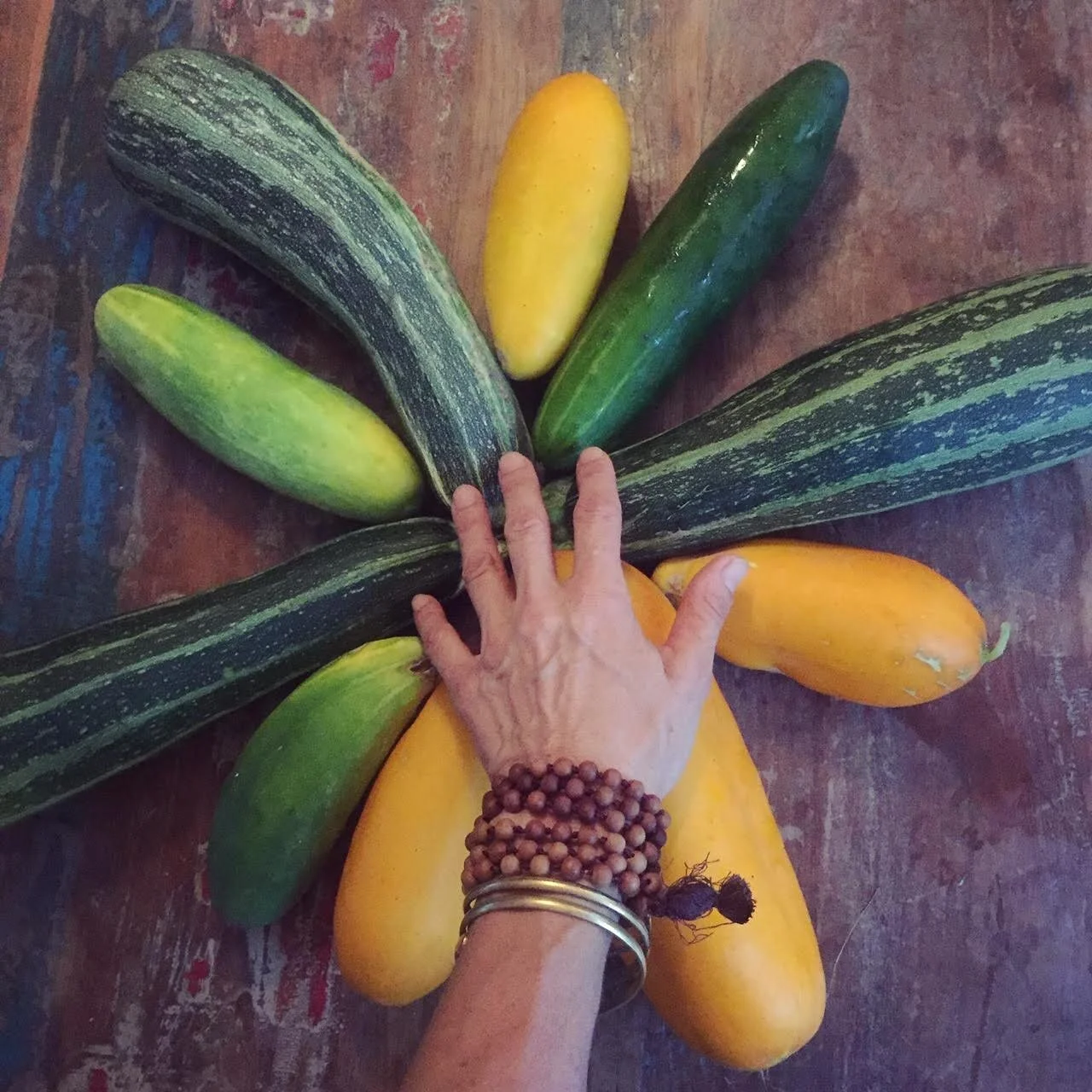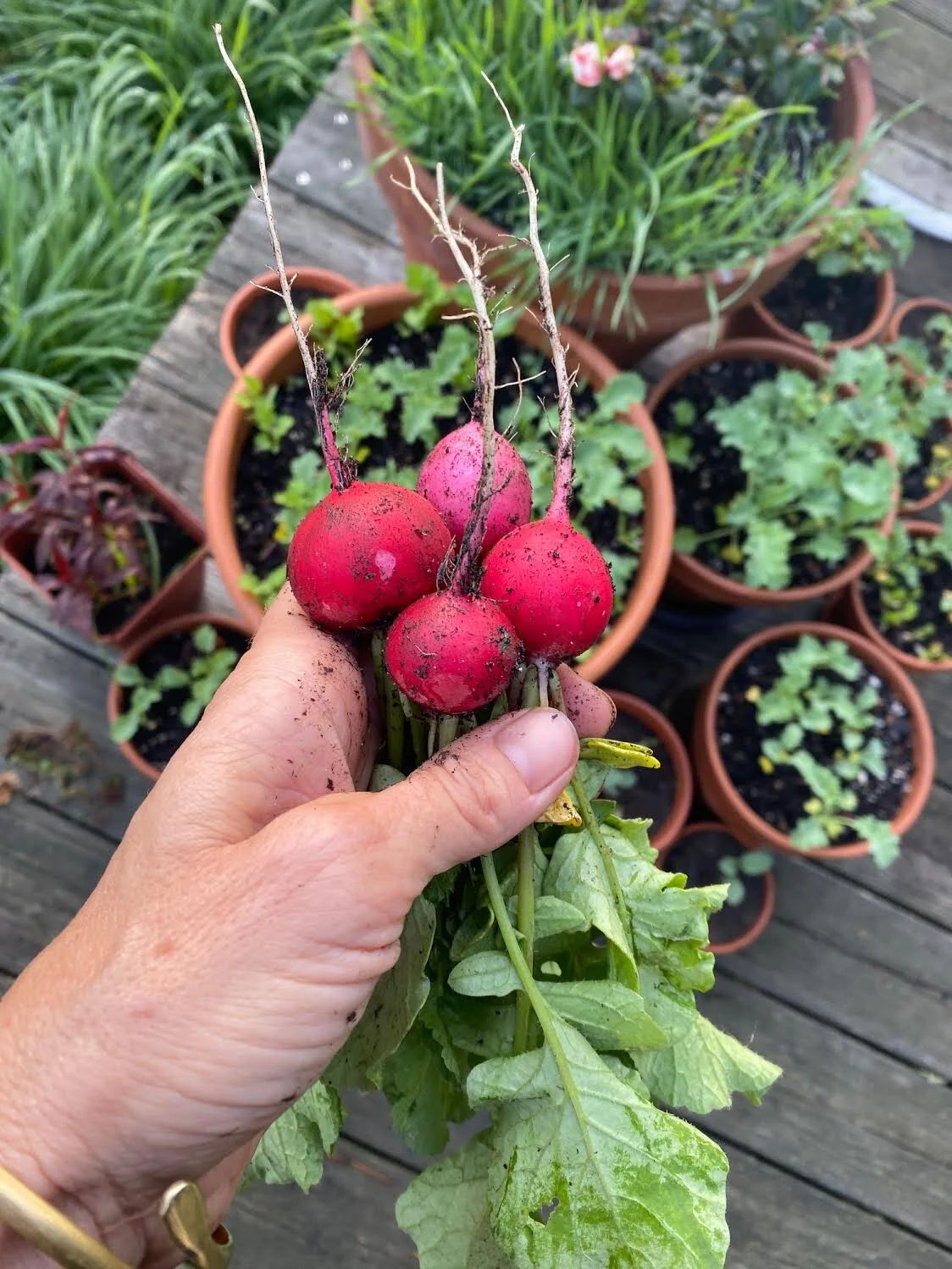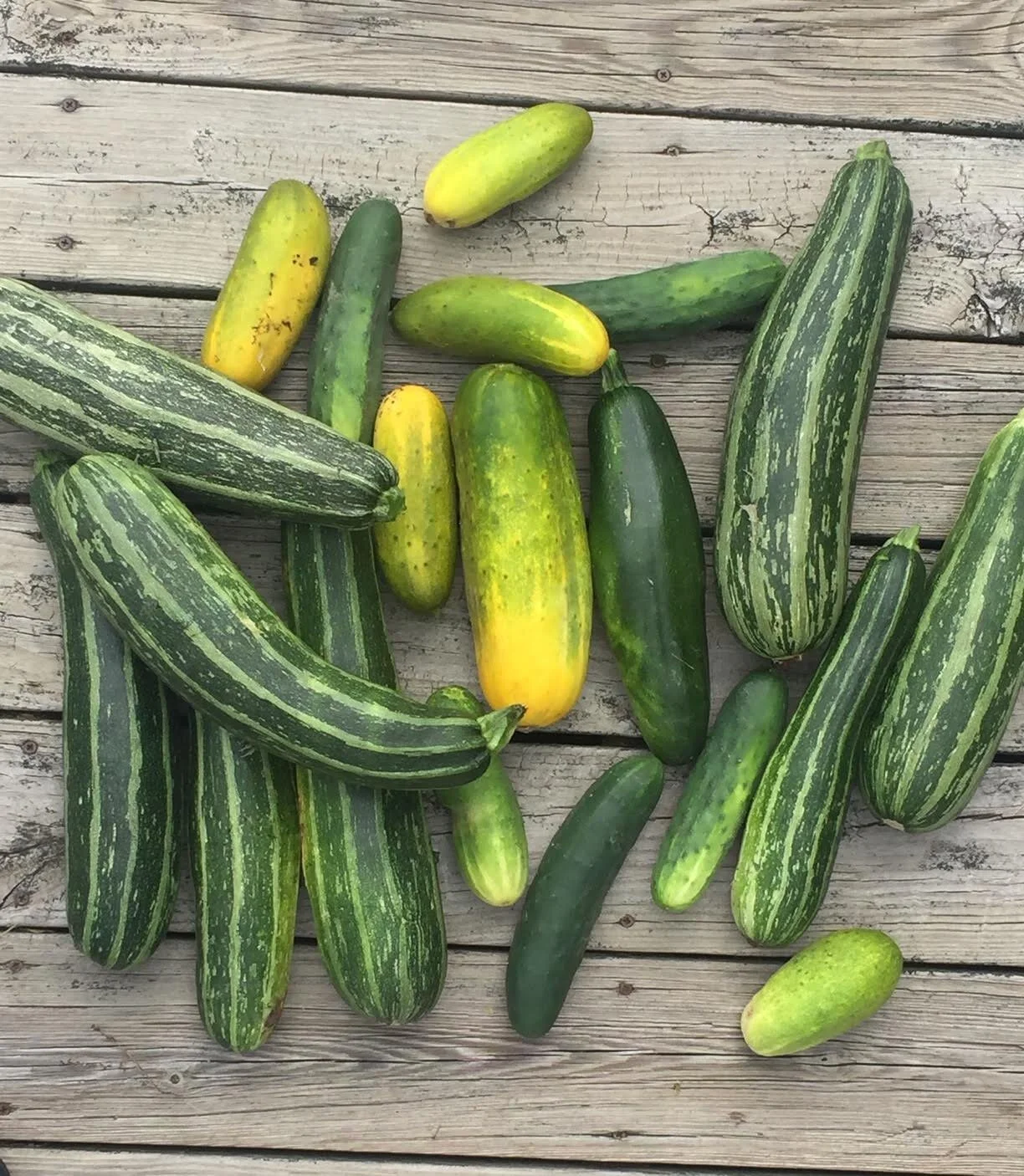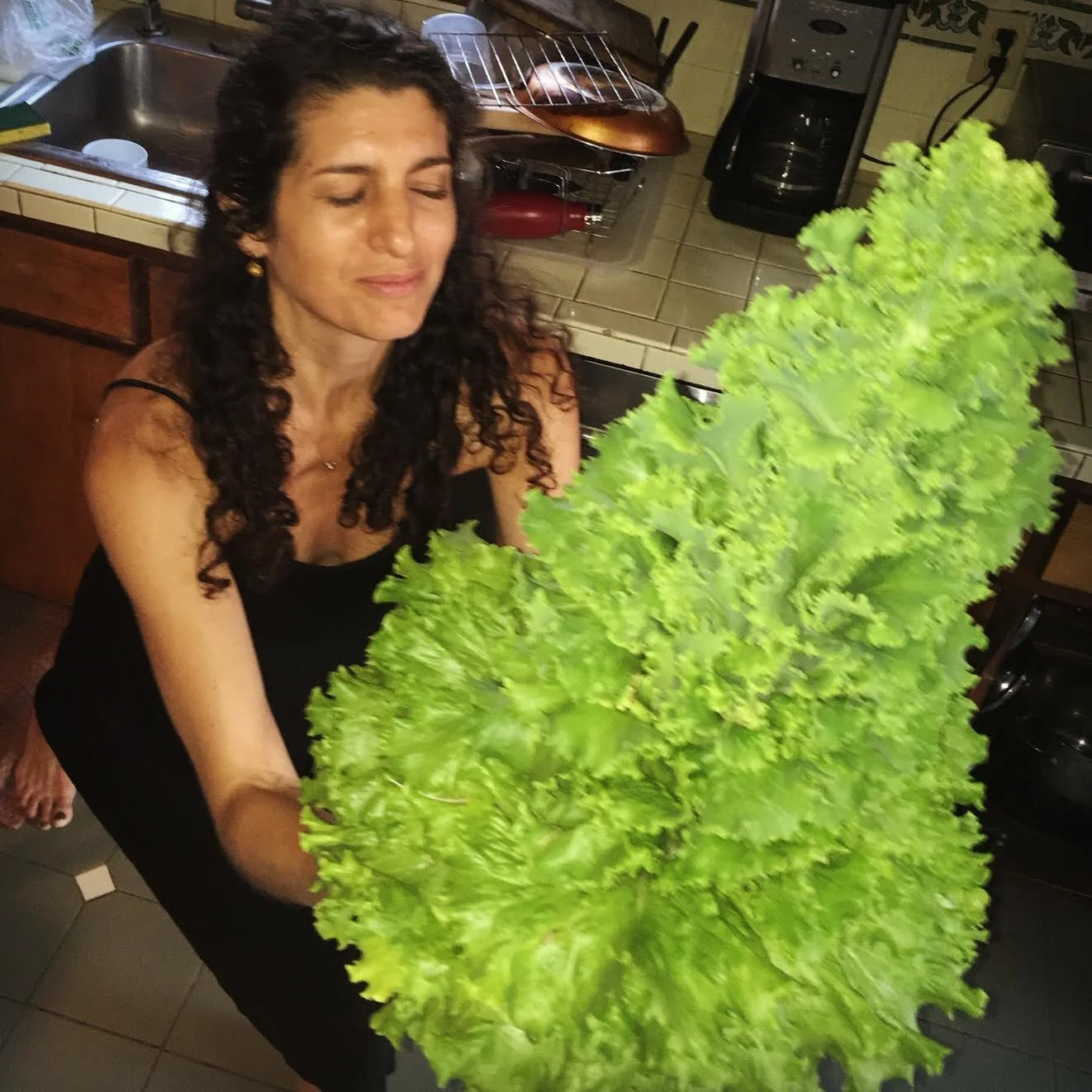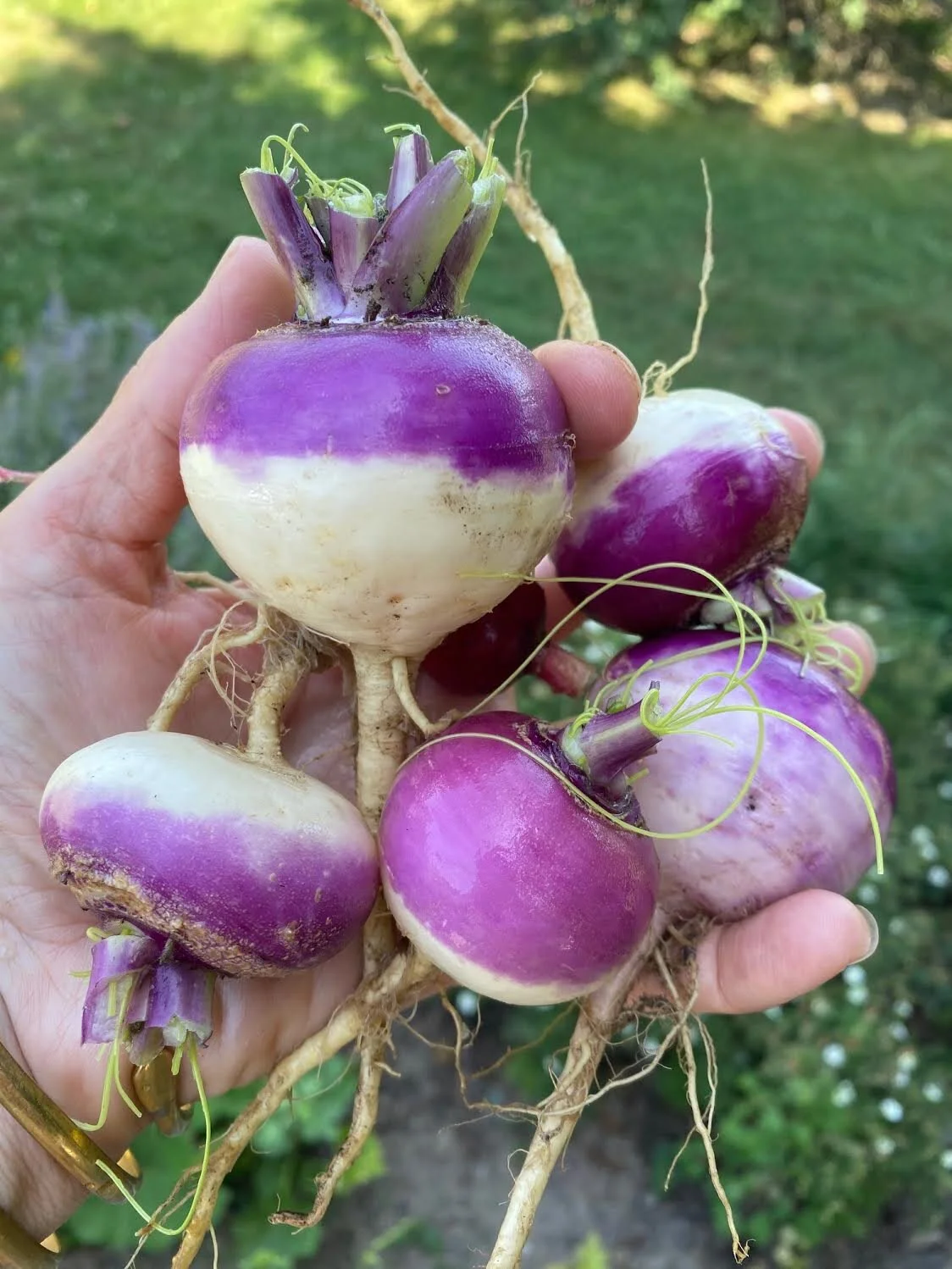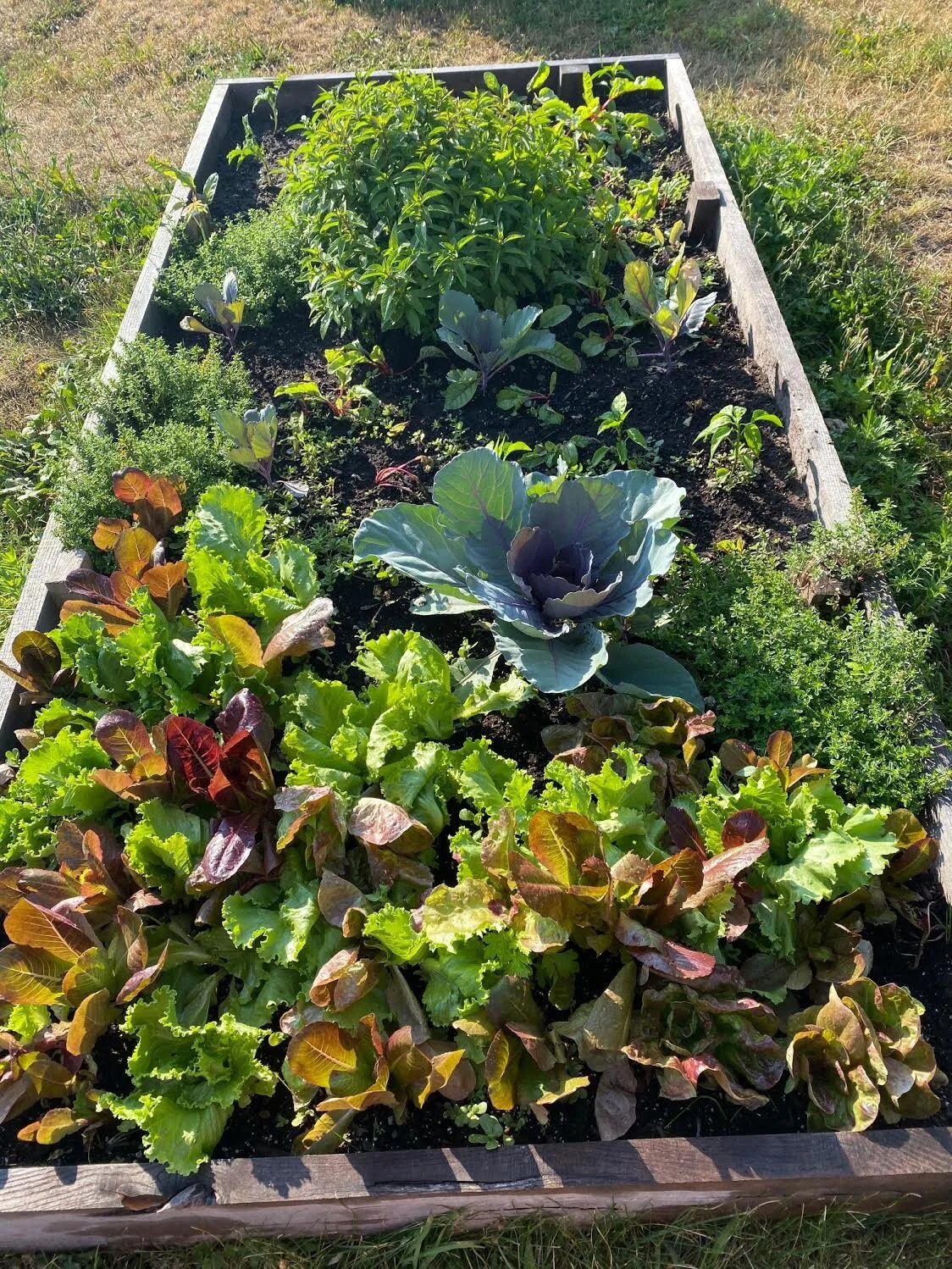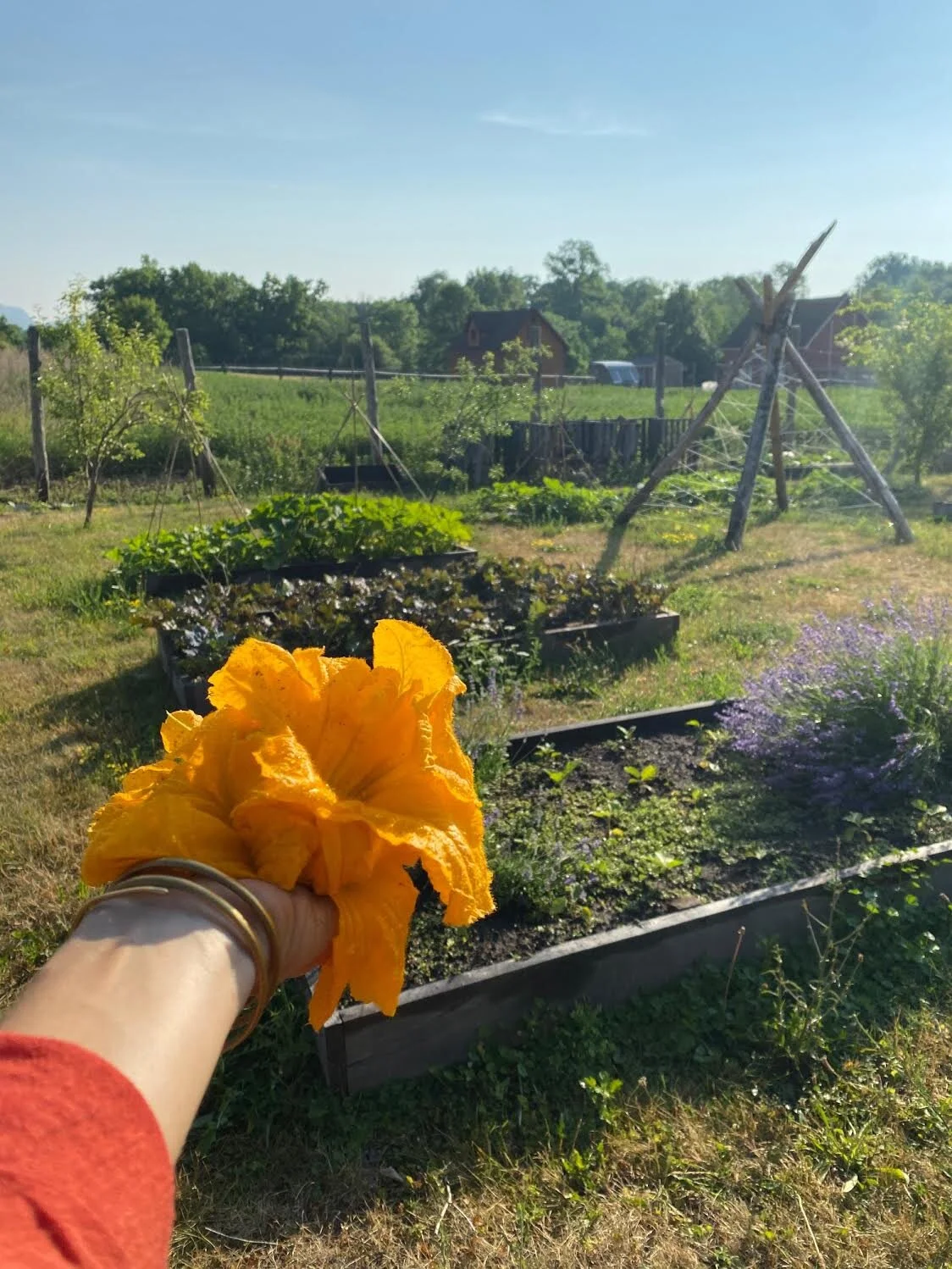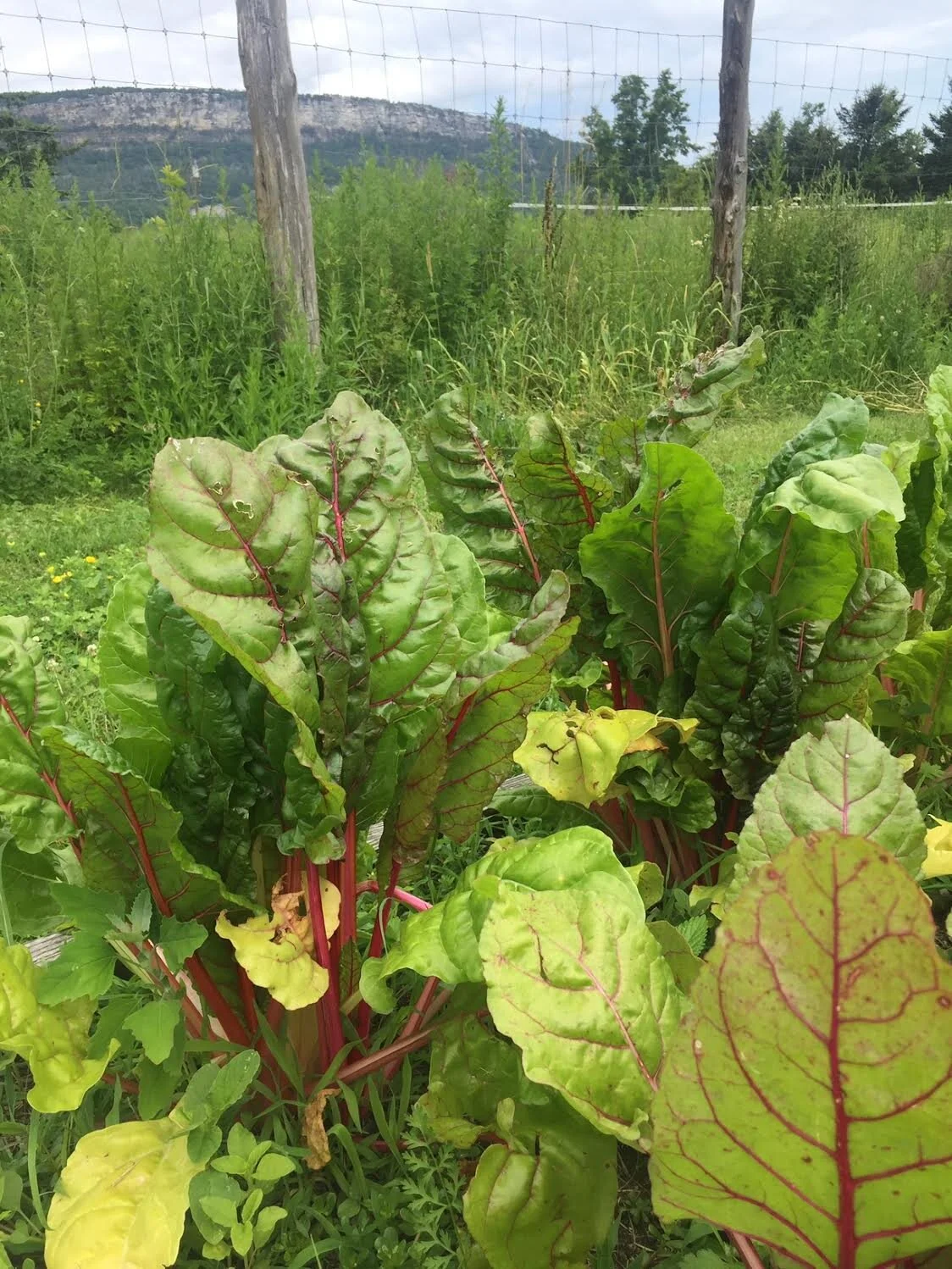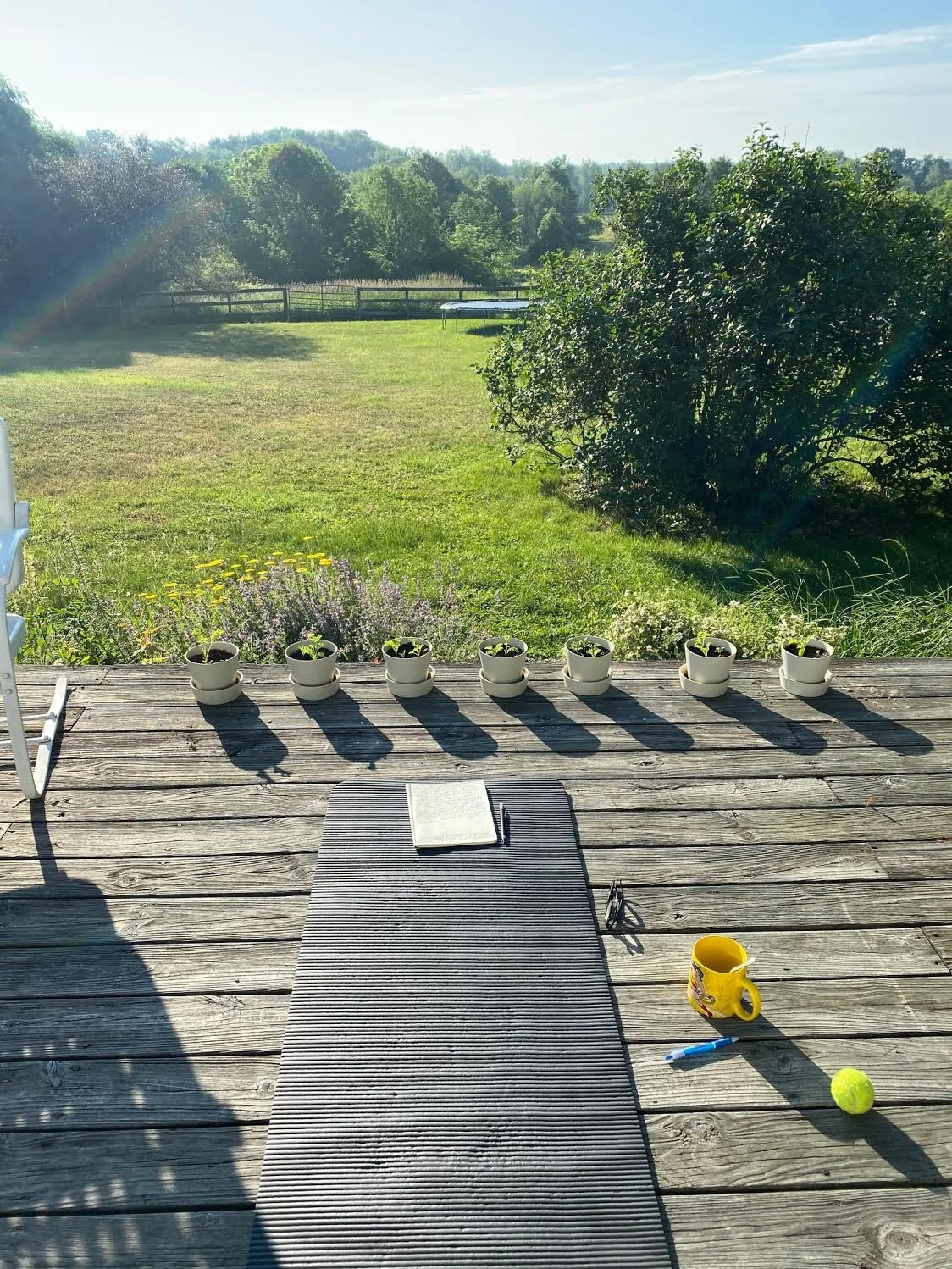Water and Wait
It is March, and I’m feeling pressured to get my seeds into soil. Every year, I’m not sure if I’m a little too early or too late. Without guidance, the wisdom of tradition or elders, or the impetus to do much research about it, I prefer an intuitive fumbling and discovery, with gifts of surprise. I hope nature will be forgiving (again) to those of us who don’t know better, waiting until I get a “today’s the day” instinct, regardless of weather or moon or equinox and then get to work. In past years I’ve filled trays on my kitchen floor and counters, soil strewn everywhere but this one, excitedly, proudly, I enter my new second-hand greenhouse, and spread my beautiful seed packs around me on the floor where I sit splayed on the cardboard I laid down to thwart the encroachment of weeds. I squint at the packets (misplacing my glasses doesn’t help) and glean what I can from the miniscule and spare instructions. The air smells like wet earth, it’s warmer here than the frigid temperature outside, and a hint of pale sky shows through the tattered plastic that arcs over me. I couldn’t be happier.
I have saved stacks of old trays and disposable seed pots in anticipation, ambitious hope, and evidence of a subtle streak of border-hoarding. Those are in tumbling stacks at the ready, along with bags of dark moist organic soil and all the other makeshift receptacles I’ve been asking my family to save. In just two weeks I am amazed by the waste I have repurposed, that will literally help nourish the lives of my family a second time: egg cartons, low jam jars, an old wooden cigar box, plastic salad containers, milk cartons which I have retro-fitted for seedlings by cutting away much of the sides and top to leave a square form, walls about 2 or 3” high.
“Neat rows, seeds submerged into soft earth, within receptacles of resourcefulness, of waste that has become useful again…”
This morning I carried in dusty broad bottomed, seatless wooden chairs, quickly upcycled with planks of wood to create elevated platforms to hold my endless trays of seeds and hope. Then, making deep grooves in the hard earth, I awkwardly dragged (nay, wrestled) 2 large industrial shelves from the barn to find their place on the tallest wall in the greenhouse.
I am almost ready.
Every summer I make a garden. Each year it gets bigger. I add more vegetable varieties and new perennial flowers in the beds around the property. This very early spring, at the imprecise moment that my heart and body told me it just might be 4-6 weeks before the last frost as suggested on some of my packets— (as if anyone could pretend to know for sure,) I have felt a growing urgency to plant my seeds. The sudden news of Covid everywhere is revving that up, along with warnings of vulnerability, concerns about food supplies waning, and my maternal instincts suddenly swelling to mythic proportions. I am thinking about how I can feed my loved ones as well as neighbors through the next months, and even having plenty extra for others if need be.
It’s not just seeds I have been thinking about in preparation. I’ve been making mental lists of many things my family may need to weather scarcity for (even) months on end. I have been stocking up— not crazy amounts, probably not even enough to last a full month considering my (three) sons, mom, brother and tenant friends all share my property now, my son’s dad visits often and if things get worse, would stay. And there are several friends who could come and live here, if things get bad enough.
What is bad enough?
So here’s what was on my list:
Canning supplies including lots of vinegar, salt, pectin, sugar, jars and lids—things I’ve never previously put to use to make jams or pickle. But having them on hand has immediately soothed a latent part of me that has secretly always been mentally prepared for homesteading, assuming that the day would come (again) that war, or government, or some virulent something would force us to return to a more sovereign agrarian or survivalist lifestyle. Unfortunately, only a few weeks into this madness and I am already being shown, as the world is, where our collective and personal vulnerabilities are, imagined or otherwise. As a granddaughter of 1st generation Jews just after WWII, I grew up with plenty of stories about the impact of paucity, denial, and the length humans will go for their perceived threats to survival.
Please don’t judge my pectin; there are just a few packets. And I thought making jam would be a fun and empowering distraction for our whole family, not to mention make some great tasting jam. But I digress…
Bags of flour, baking soda, yeast, honey, along with yes, some extra toilet paper, but not so much that I deprived any forlorn shoppers. I even bought a BIG box of (ultra thin, latex) condoms for my sons and hey, you never know who else. I also read once that condoms were in high demand and low production during the Second World War. So… can you blame me?
Not to mention, quarantine might start to get very dull indeed. You may even need a few; feel free to reach out.
I bought 22 chicks that are currently sharing my 10 year old’s room, peeping under a heat lamp in a box, and soon to be transferred to the barn when big and feathered enough. I have also indulged the purchase of two boxes of large Ziplocks—defying my hatred of all things plastic—in case I decided to freeze the bounty from my garden, assuming we will still, at least, have electricity. I don’t have any intention of buying a generator, that feels just a little too… prepared. Of course I am laughing at myself as I write this though as I did fill up propane tanks, stock up on water, as well as herbal remedies and vitamins to boost immune systems and fortify lungs. Oh and that’s not all. I purchased a more powerful (used) wood stove of the soapstone variety with more capacity to heat our home off grid, if need be, even for a little while. I had a cord of wood delivered to burn, and another pile that was inoculated with shiitake mushroom spores stacked near my barn. And I am carefully placing seeds, one by one in trays that I am lining up in orderly-ish rows by kind on my makeshift shelving, filling my lungs with the exquisite loamy smell of wet earth.
It is still many weeks before the soil outside will be thawed enough to work with tools and hands. But inside this light filled space, its walls curved like a woman’s hips, the world feels softer, more forgiving, patient, and entirely safe. The plastic obscures the sky with a gentle opacity that leaves me guessing at the sharper details behind the veil. This is just how I often feel now that my vision is failing as I age, a process I have been working to surrender to, for the blurring it offers also invites a letting go of life’s edges which feels okay, because in that acceptance, a deeper visioning and more finely tuned sensing must emerge.
“How can I share how these imperfect rows of possibility within this rounded, forgiving space feels like an oasis of peace more than any other right now, this arsenal of nourishment, of potent miracles? (For what else is the sublime combustion that is each seed + water + care + the sun’s grace?) “
When it gets too hot in the next days and weeks, I will simply prop open the door, and colors will come into view: the field of last year’s mugwort in soft grey and browns, the joyous return of green grasses, birds soaring and slicing the sky, also anxious for the emergence of spring.
Neat or rambling rows, seeds submerged into soft earth, within receptacles of resourcefulness, of waste that has become useful again. I don’t label each tray because of course* I will remember what I’ve planted and where, the tomatoes in this row, peppers on that shelf, and so on. At the back of some groupings I insert a chop stick, broken in half and poked through the empty packet that will loom over its territory of seedlings with its bright image of what all these tiny, seemingly unremarkable and lifeless teardrops will become. Again, I usually don’t bring my glasses, forgotten again, along with everything I “should” do.
I could spend endless whole days in here, pushing seeds into soil, filling water bottles to nourish them, creating more viable containers out of refuse— so I steal what time I can sitting or squatting on the ground like an overgrown toddler, wrestling milk cartons with my dull scissors to make more nests for these small green miracles. While I do, I forget for a time about people dying alone in apartments, the disparities in access to healthy food, good medical care, nature, and room for privacy or even safety. I don’t think about how sexual and domestic abuse are on the rise, along with alcohol and drug use. Here, I can forget about my mother’s litany of judgements, complaints, and reports of more bad news about government incompetence and rising fatalities, even though HERE, now, she has loved ones waiting on her, incredible homemade food, that she can sit on the deck and watch the clouds, or the changing light in this miraculous valley. For a few magical, untethered moments, I am alone in this space, out of the way of thought and grief, focused instead on the simple doing of creating and growing Life and healthy food as medicine for the body and spirt, and cultivating beauty.
My greenhouse May 2020
I wish I knew the seed songs that I have been told Native Americans have long sung to coax their green babies out towards the sun, honoring each one’s unique need to emerge in its own time and way. I pour love through my fingertips though and hope that will be prayer enough to help robust vegetables emerge confidently.
Sometimes I will feel called to water twice a day, depending on humidity and heat. Small vulnerable things will begin to rise up eventually in a pattern that is all their own. Some verdant heads reveal through the dark as if orchestrated, a slow ballet of graceful shoots, the same type at the same height, as if they all woke together. But in each grouping there are those that slumber longer, or emerge crookedly, as if the light is too bright, that its not worth pepping up for, at least not yet. Some never awaken at all, but I will water and keep watering diligently with my usual optimism until so many weeks after all the telltale signs. Eventually I must finally accept that still borns are a part of all this too. Some may take their time, but for some there won’t be time at all.
Through all this I will wait and water, water and wait.
My tallest child has asks me skeptically, “Is it worth the time? All this work? Can’t we just buy our vegetables from a farm, support a CSA? Wouldn’t you rather have time to write? Or…” but I only half hear him and feel no inclination to convince him of the rewards of this slow tenderness, this intimate and patient adoration that settles something so deep inside my darkest and most unprotected places. How can I share how these imperfect rows of possibility within this rounded, forgiving space feels like an oasis of peace more than any other right now, this arsenal of nourishment, of potent miracles? (For what else is the sublime combustion that is each seed + water + care + the sun’s grace?) And don’t each of us humans rely on and bloom with the same elemental ingredients to thrive, possess the same flagrant potential to attract more (or less) beauty and connection, or wither, alone in the dark?
How safe and fragrant the cool soil, like the layers of protection I must return and surrender to each night and many afternoons now to rest when the weight of the world’s chaos feels too big and, too, my tiny form feels less mighty than it can. Or my heart, lusciously full, or grateful to guilty, knows with a body felt wisdom that begins in my mama-belly that a whole generation of children growing up in isolation, hidden behind masks, missing the healing of smiles, shared laughter, and hugs, and fearing the invisible world will have a hard time growing straight and strong.
They say plants grow healthier with natural sunlight, wrapped in the symphony of birds, the caress of wind and rain, and loving touch and words. Round, warm, safe, tended by loving hands, I call in all the mothers, grandmothers, and aunties from near and far, then and now, silently, unseen, a flow of milk-love, tender strength, healing songs, and faith in goodness to spill into all who need it most, who will need it most.
“Small vulnerable things will begin to rise up eventually in a pattern that is all their own. Some verdant heads reveal through the dark as if orchestrated, a slow ballet of graceful shoots, the same type at the same height, as if they all woke together.
My friend Alison said, “We are being taught to fear the invisible, but it is in the invisible that is where the magic and powerful healing are, that we should not be shielding ourselves from but inviting in, asking for the support of all we can’t see to keep us strong, and to summon the wisdom and fortitude of our own systems. Where there is fear, there is weakness. Where there is fear, there is dis-ease.
“I am a yoga teacher. I have lived by the concept of balance- body, mind, Spirit. Why would I want to throw all that away now, when I need balance most? Fearing the invisible also means fearing what can serve us best (including the ones we love) when we are fearful and depleted.”
Water, nourish, love with patience, water, nourish, love: that is the best I can offer right now from this small corner of what feels like a very stranger world.
-end-

